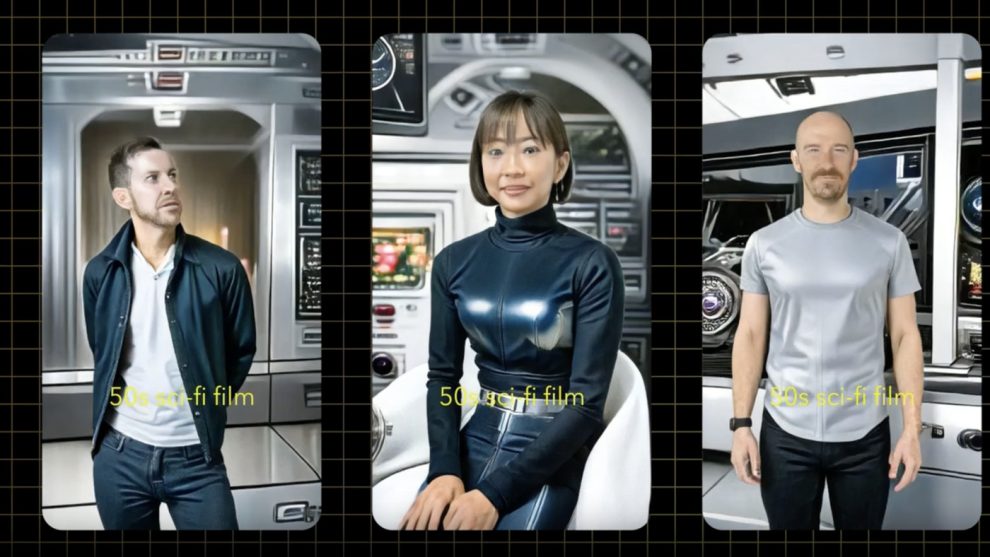Transforming Imagination into Reality: How It Works
This revolutionary feature is integrated into Snapchat’s Lens Studio, previously the domain of professional creators. Now, through a new interface called “Lens Prompt,” even users with no design experience can craft unique lenses. Here’s a breakdown of the process:
- Spark Your Creativity: Users enter a text prompt describing their desired lens effect. This could range from concrete concepts like “neon cityscape” to abstract ideas such as “essence of tranquility.”
- AI Magic: Snapchat’s sophisticated AI analyzes the prompt, drawing from its vast database of existing lenses and visual effects. It then generates a starting point for the lens, translating text into visual elements.
- Refine and Personalize: Users aren’t limited to the AI’s initial creation. They can fine-tune various aspects of the generated lens, including color schemes, animation styles, and specific objects.
- Share and Collaborate: Once satisfied, users can share their custom lens with friends or submit it to the broader Snapchat community, fostering a collaborative creative environment.

Beyond Entertainment: A New Era of User-Generated Content
This AI-powered lens creation tool signifies a major shift in how social media platforms approach user-generated content (UGC). Let’s explore its potential impact:
Democratization of Lens Creation
Previously, creating custom lenses required technical expertise and specialized software. Now, anyone with a creative idea can contribute to Snapchat’s lens library. This opens doors for diverse perspectives and unique AR experiences.
Enhanced User Engagement
The ability to personalize the Snapchat experience through custom lenses is likely to boost user engagement and retention. Users who create their own AR experiences may feel more invested in the platform and eager to share their creations.
Fostering a Creative Community
User-generated lenses have the potential to strengthen Snapchat’s community. Sharing and collaborating on lens creation can create a supportive environment where users inspire and learn from each other.
Addressing AI Ethics and Platform Safety
While the possibilities seem endless, Snapchat is mindful of the ethical considerations surrounding AI-generated content. Here’s how the company is addressing potential concerns:
Content Moderation
Snapchat’s existing content moderation systems will play a crucial role in ensuring user-generated lenses adhere to community guidelines. This includes filtering out inappropriate content and maintaining a safe user experience.
Transparency and User Control
Snapchat emphasizes user control over AI-generated content. The ability to refine and personalize suggested lenses ensures the final product aligns with the creator’s vision.
Responsible AI Development
The company remains committed to responsible AI practices. By continuously monitoring and improving its AI models, Snapchat aims to provide bias-free and inclusive lens creation capabilities.
The Future of Social AR: Beyond Text Prompts
This text-to-lens feature marks a significant leap in the evolution of social media experiences. As the technology evolves, we may see additional input methods for lens creation, such as:
- Voice commands
- Image references
- Gesture-based inputs
These advancements could lead to even more immersive and interactive AR experiences, further blurring the lines between digital and physical worlds.
A New Playground for Creativity and Expression
Snapchat’s innovative approach paves the way for a future where users are active participants in shaping their digital landscape. By empowering them to create personalized AR experiences, the platform unlocks a boundless playground for:
- Self-expression
- Storytelling
- Visual communication
- Artistic exploration
Whether it’s transforming surroundings into fantastical realms or adding a touch of whimsy to everyday moments, users now have the power to design their own Snapchat reality, one text prompt at a time.
Potential Applications Beyond Social Media
While currently focused on entertainment and social sharing, the technology behind Snapchat’s AI-powered lens creation has potential applications in various fields:
Education
Students could create interactive visualizations to better understand complex concepts in subjects like science or history.
Marketing and Advertising
Brands could quickly prototype AR experiences for products or campaigns, allowing for rapid iteration and testing.
Virtual Events and Conferences
Organizers could craft custom AR environments to enhance virtual gatherings and make them more engaging.
Challenges and Considerations
As with any transformative technology, there are potential challenges to consider:
Quality Control
With the influx of user-generated lenses, maintaining a high standard of quality and performance across the platform may become more challenging.
Intellectual Property Concerns
Clear guidelines will be necessary to address potential copyright issues arising from AI-generated content based on text prompts.
Digital Literacy
As AR creation becomes more accessible, there may be a need for increased education on responsible and creative use of these tools.
Conclusion: A Glimpse into the Future of Social AR
Snapchat’s introduction of AI-powered lens creation from text prompts represents a significant milestone in the democratization of augmented reality. By putting powerful creative tools in the hands of millions, the platform is not just changing how we interact with social media, but potentially reshaping how we perceive and engage with the world around us.
As this technology evolves, we can expect to see even more innovative applications of AI and AR in social media and beyond. The future of digital interaction is being written – or rather, spoken into existence – one creative prompt at a time.
















Add Comment